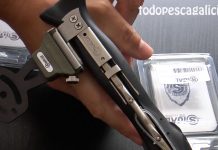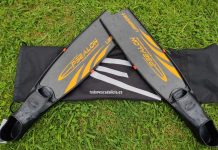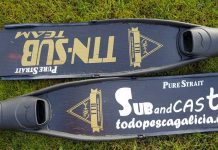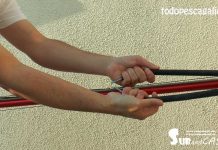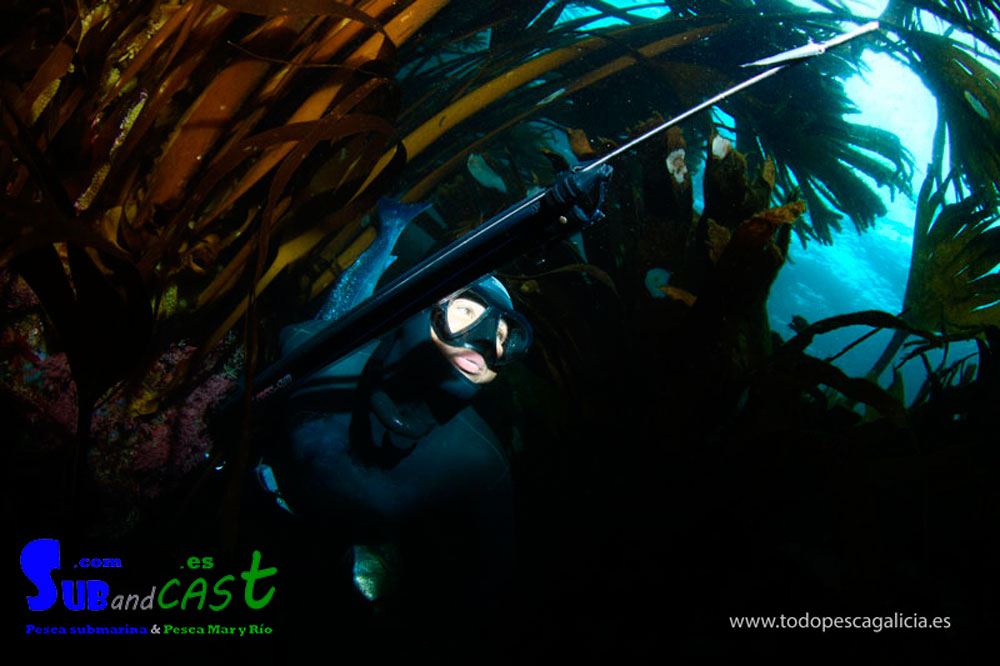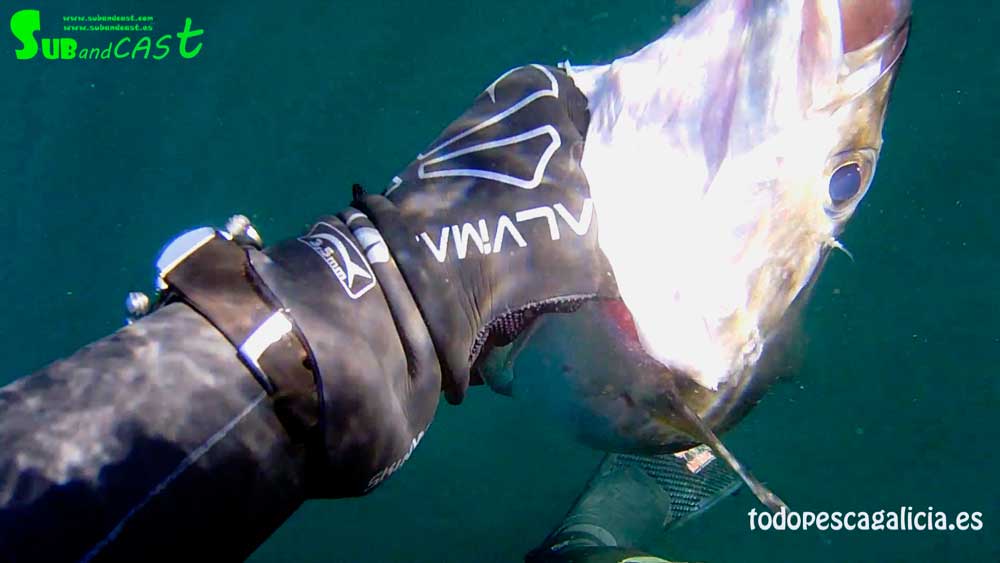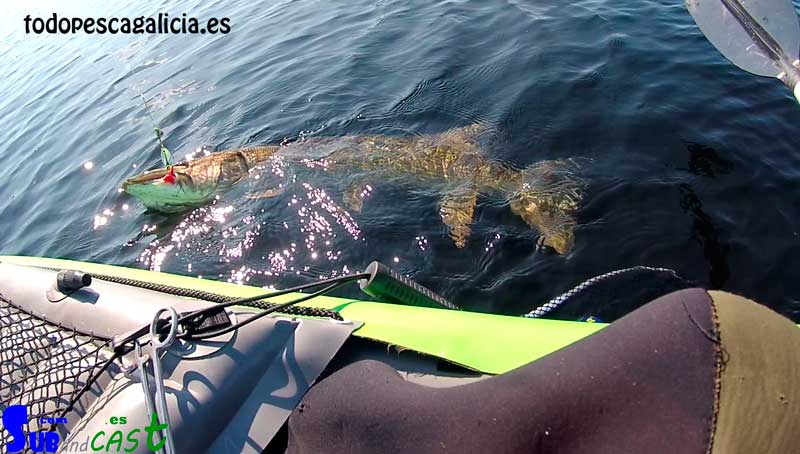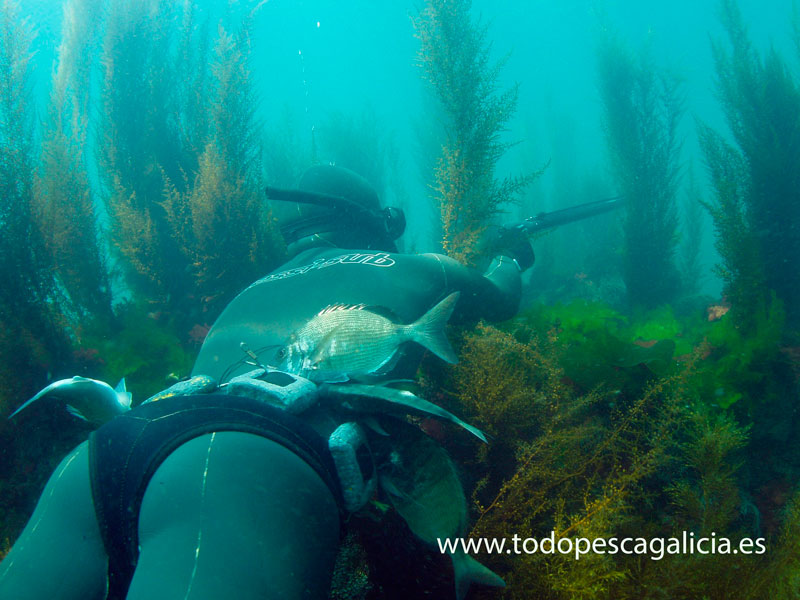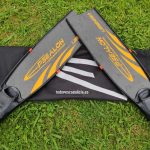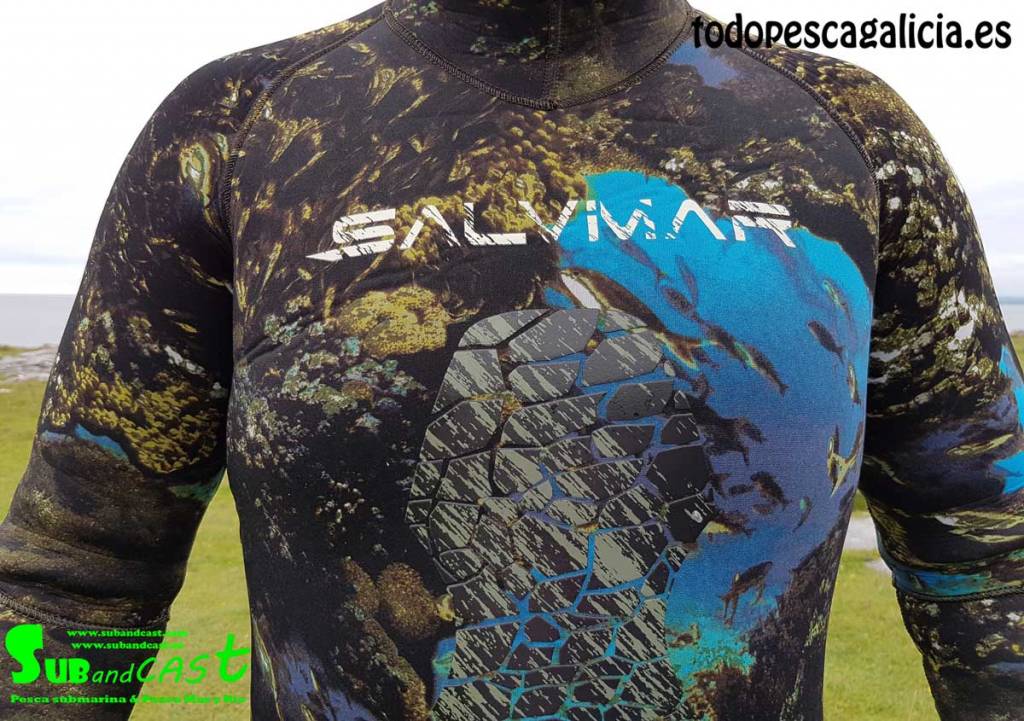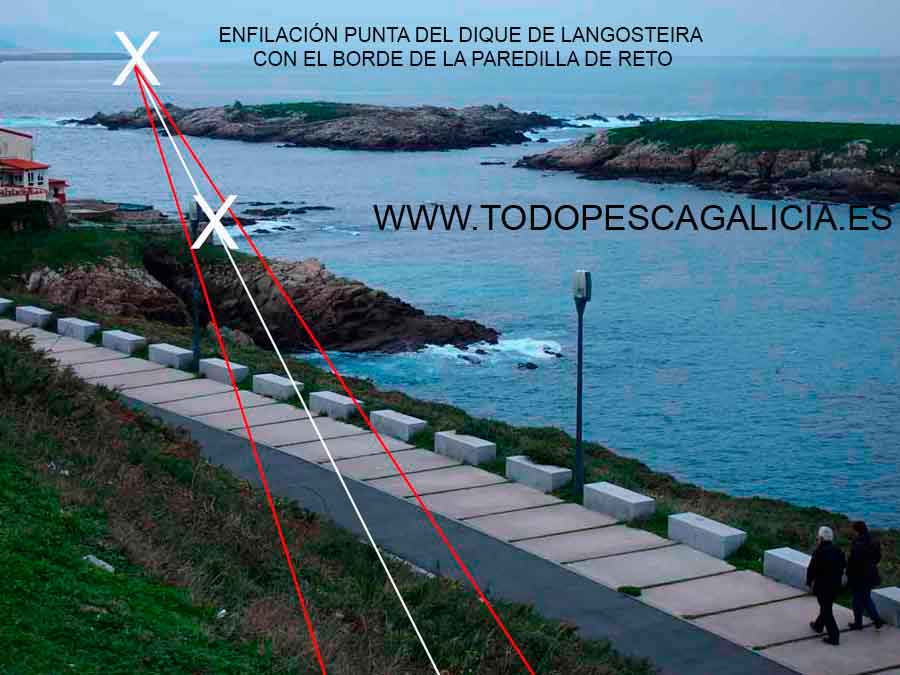HOW TO BEHAVE IN THE FACE OF WINDS AND CURRENTS WHEN SPEARFISHING
Safety tips for when we go back to the shore
Sometimes the desire of going fishing is too high and we get into the sea without thinking about the hypothetical dangers or unforeseen difficulties that can arise when going back to the shore.
In this short article we are going to talk about how to minimize the risks and know how to behave if we face a difficult situation.
 The main problems we can find when we want to go back to the shore and get out of the water are:
The main problems we can find when we want to go back to the shore and get out of the water are:
– The currents
– The wind
– The waves (due to the swell, the wind or both)
Let’s see how they affect us, how to prevent the hypothetical risks and how to act.
First of all we have to check the weather forecast of the place in which we are going to fish. It’s important to be aware of weather changes. If the wind speed will increase, if there is any swell coming…
We also should check the tide tables. Because the currents are stronger when the tide is going up or down, and they get softer during the low tide and the high tide. Big tides cause stronger currents than the small tides.
A nautical chart of that area and a map should also be examined. The chart can give us tips about the presence of currents. The usual situations in which we can find currents are:
The spot is close to a cape: It’s normal to find currents in the edges of the capes. If there are underwater crests and sudden changes in depth the current will be stronger. This ones get more and more violent when we get close to the cape and the shallow part. And then, it becomes softer if we get away. An example of this is Cape Prior: 
The water goes from two different deep areas to a single one (the cape) with shallow depth and some underwater crests. There usually are strong currents that becomes softer when we move from the cape to the deep áreas.
If there are underwater crests, any island or a canal: It’s common to find current between the shore and a further area with underwater crests. They appear when that point gets narrow and the water stream gains speed. If we get away, they become softer. A good example of this situation is this one, in the Portiño Islands, along the inside canal:
 The water goes into a canal and it creates currents, which are stronger in the shallower areas. It’s a small scale example, but big currents can appear in that small canal in the middle (the green part) that communicates both sides of the islands. It’s a small section, but it can also be difficult to cross sometimes.
The water goes into a canal and it creates currents, which are stronger in the shallower areas. It’s a small scale example, but big currents can appear in that small canal in the middle (the green part) that communicates both sides of the islands. It’s a small section, but it can also be difficult to cross sometimes.
In estuaries or bays: This areas get without water in each tide (or change a big part of it). They are usually spots with a lot of currents in several parts. Specially in the places where they get narrowed by a cape or island. Be very careful in this spots, because the currents can be very very strong. But the good part is that they lose their strength if we get away from those areas. One clear example is Ferrol, between the castles. 
A good example of a “funnel” with strong currents. It disappears in the coves and gets stronger in the capes and in the canal.
There is one more type of current spot: the one created in underwater crests and islands due to the waves. When they break against the rocks, a current is generated. It’s very easy to spot because there is a lot of foam. But it’s not problematic at all, because it disappears as soon as we get away from this spot.
The most important thing in all this cases is to not panic. Currents are something normal, we will find them in several fishing days and they won’t be a problem if we know how to behave.
The basic rule is to not fight against them. Except if it is very mild and we know we can overcome it with some effort. We can also go against it if we know it’s going to be on a very specific and short section (when going around an island, when crossing a small canal…). But knowing our own fitness level is a must. Be sure that we can do it without risks or complications. Take in mind that having a cramp or getting exhausted would leave us adrift.
As we said, don’t go against the current. Try to use it going diagonal towards the spot we want to go. Generally, the currents are softer (or even disappear) when we get close to the shore. For this, when we find a current we can just adjust our direction. We cross it in diagonal, and once we are close to the shore, we go back swimming relaxed.
It’s very important to keep a calmed and steady finning pace. One we can maintain during a long period. It’s useless to go for a hard sprint if we need to stop to rest after it. A slow and steady movement is better.
In some very shallow areas it can be even better to just swim along the bottom. Sometimes the current is milder or it’s more convenient (we advance more finning underwater than in the surface). So we can think about going slowly and even “fishing”. Keep a relaxed finning in the surface, just to stay in the position and then advance when we are in the bottom.
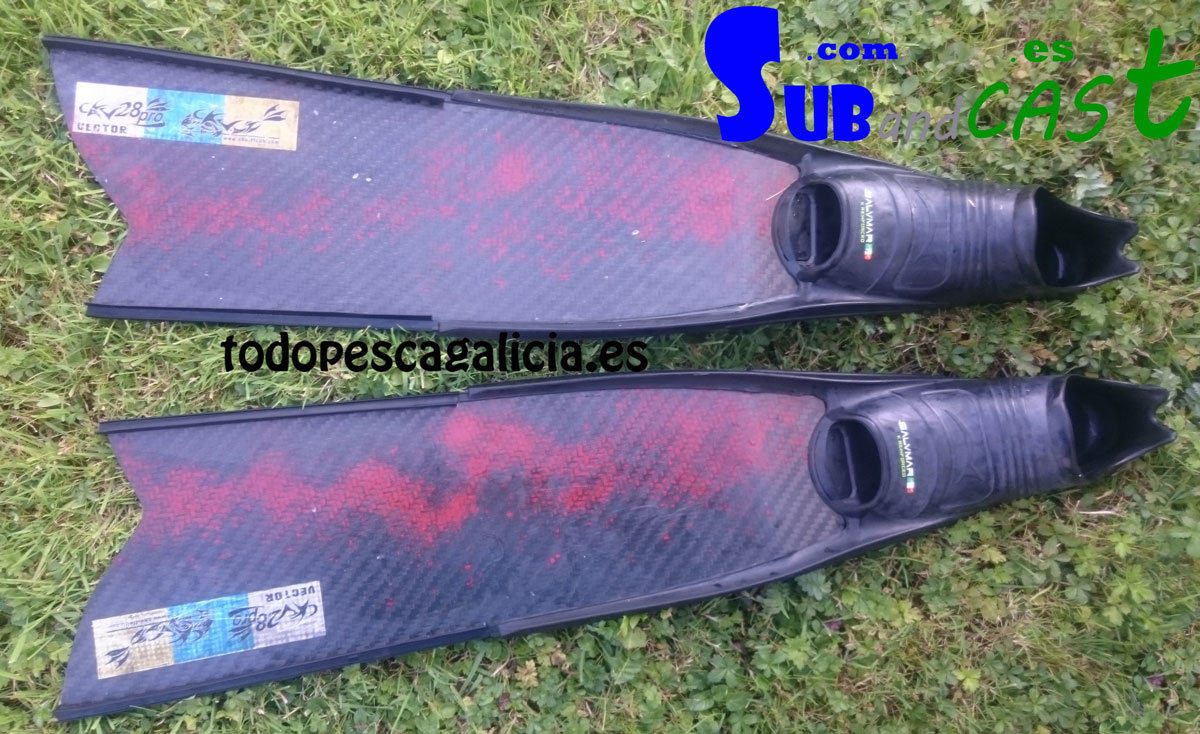 There are several different solutions, although the most important thing is to stay calm and don’t panic. A current shouldn’t be more than a change in our route and ending a bit more fatigued.
There are several different solutions, although the most important thing is to stay calm and don’t panic. A current shouldn’t be more than a change in our route and ending a bit more fatigued.
When we have underwater crests close to us, one of the sides will be without current (it gives us shelter). So, depending on the shape of the coast, a good solution is to use the current to get close to them and go around, using that sheltered side in our benefit (this applies for underwater crests that are perpendicular to the shore).
We can see on this picture how we should act:
 As we can see, always looking for the diagonal and the sheltered sides. But above all, keep calm.
As we can see, always looking for the diagonal and the sheltered sides. But above all, keep calm.
BE CAREFULL WHEN FISHING ON UNDERWATER CRESTS FAR FROM THE SHORE: When we go by boat and we anchor it, we can find currents that don’t let us to go back to the boat. We should check them before jumping to the water. And also pay attention without getting to far from the boat, to feel it there is any new current starting to flow.
THE WIND: It can be a big problem because it can makes us drift. Although its strength will always be softer than the current. It will affect us mainly in our buoy. It’s more important to keep the current in mind than the wind. If there is no current, but there is wind, we will be able to fight it without any trouble. The wind is easier to foresee thanks to the weather forecasts.
The only big trouble we can suffer with the wind is if we have a very big buoy. We will talk about this in the end of the article. The solution is to use appropriate buoys and not very loaded, as we will see later.
FITNESS LEVEL: Everybody understand that is very important. Under these conditions, we will need to keep a constant finning. Sometimes during a long time. For this, the spearos who are not used or not able to keep a strong and continuous finning, should avoid this kind of spots and not go far. Our advice is to be able to fin non stop at least from half an hour to one hour, with a soft and continuous pace. It should be enough to avoid most of the problems.
FINS: A soft and comfortable pair of fins are the best ones for these situations. A hard fin, that can be very good for another situations, will be a hindrance in this situation. It will only make us tired, and make our advance more complicated if we decide to go against any current.
THE BUOY: Pay special attention to this part of the equipment, that is miss regarded a lot of times. A big buoy with a big body will create more resistance against the wind. And also, a heavy buoy will be more difficult to be carried. Keep it as clean as possible. An open net creates a lot of drag, more if it has fish inside. Or a pair of flip flaps, or a bottle… We should always remove all this stuff. Spare guns and other things will be an extra weight that can make the difference between crossing a current without problems or struggling a lot. So, if we decide to carry a speargun or a net, put them as close to the buoy as possible. But the ideal option would be to have an empty buoy for this conditions. Big buoys like boars can be too slow and heavy. A “pain in the ass” in a situation with wind or current. A good set up and a lightweight buoy will be the best.
 If we find difficult to tow it, we can grab it, put it in front of us and push it. The effort will be lower.
If we find difficult to tow it, we can grab it, put it in front of us and push it. The effort will be lower.
KNOW WHERE WE ARE GOING TO FISH AND KNOW ALTERNATIVE EXITS. We have to check in a map how is the place we are going to visit. First in the nautical chart to see the underwater crests and that stuff. But it’s also very important to know the spots we can use to get out of the water in case of problems. Not only talking about currents that could push us far from the area, but also if a sudden swell arises. It’s also important to recognize sheltered spots we can go on these situations.
In the example of the picture, if we can not get out of the water in the same spot we got into, we should know which other areas we could use on each side. Not only close, but also far, because we never know…
 To summarize:
To summarize:
– Don’t fight against a current unless you already know you can overcome it.
– Use the current in your benefit, going close to the shore in diagonal, and then swimming close to it or go out.
– Use a light and well organized and lightweight buoy.
– Fitness level and gear suitable to what you are going to do. Don’t put yourselves in trouble if you are not prepared for a given situation.
– Check a nautical chart to discover potentially risky points. Use a map to locate alternative ways and exits. Also check the weather forecasts to foresee problems, winds or swells.
– KEEP CALM and don’t panic. Most of the times, the currents go parallel to the shore and they get milder when they reach deeper áreas.



